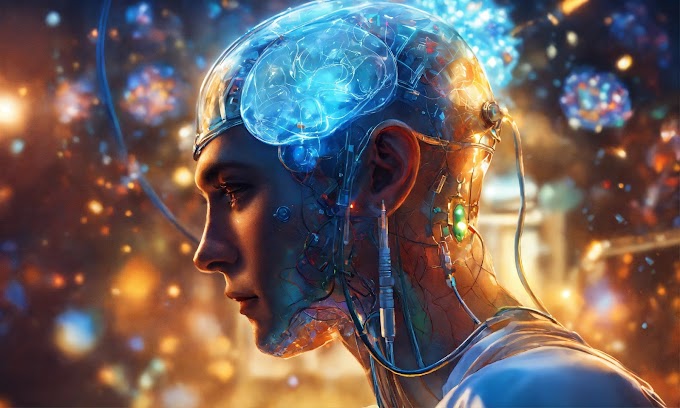1. Introduction to IoT
The Internet of Things, commonly known as IoT, is revolutionizing the way we interact with technology. Simply put, IoT refers to the network of interconnected devices that communicate and exchange data with each other via the Internet. These devices, embedded with sensors, software, and other technologies, can range from everyday household items to sophisticated industrial tools.
2. How IoT Works
To understand how IoT operates, it's crucial to grasp its key components:
- Devices/Sensors: These are the "things" in IoT, equipped with sensors that collect data.
- Connectivity: The data collected by devices is transmitted to the cloud through various communication methods, including Wi-Fi, Bluetooth, and cellular networks.
- Data Processing: Once the data reaches the cloud, software processes and analyzes it.
- User Interface: The analyzed data is then presented to the user in a comprehensible format, often via apps or websites.
In essence, IoT devices communicate through a seamless flow of data, enabling smarter decision-making and automation.
3. Applications of IoT
IoT in Smart Homes
Imagine waking up to a home that knows your morning routine. IoT makes this possible with smart thermostats, lighting systems, and security cameras. These devices learn your preferences and adjust settings automatically, providing convenience and energy savings.
IoT in Healthcare
IoT is transforming healthcare by enabling remote patient monitoring, smart medical devices, and telehealth services. Wearable devices like fitness trackers and smartwatches monitor vital signs and alert healthcare providers to potential issues in real time.
IoT in Transportation
In the transportation sector, IoT enhances vehicle safety, efficiency, and convenience. Connected cars can provide real-time traffic updates, automatic collision notifications, and remote diagnostics, while smart traffic systems optimize traffic flow and reduce congestion.
IoT in Agriculture
Farmers are leveraging IoT to increase crop yields and reduce waste. IoT sensors monitor soil conditions, weather patterns, and crop health, enabling precise farming practices. This leads to more efficient use of resources and improved food production.
IoT in Manufacturing
In manufacturing, IoT facilitates predictive maintenance, real-time monitoring, and automation. Connected machinery can predict failures before they occur, reducing downtime and maintenance costs. Additionally, IoT enables better inventory management and quality control.
.webp)
4. Benefits of IoT
Increased Efficiency
IoT streamlines processes by automating routine tasks and providing real-time insights. This leads to improved productivity and operational efficiency across various industries.
Cost Savings
By optimizing resource usage and reducing waste, IoT helps businesses cut costs. Predictive maintenance in manufacturing, for example, prevents costly breakdowns, while smart energy management systems reduce utility bills.
Improved Quality of Life
For individuals, IoT offers convenience and enhanced quality of life. Smart home devices simplify daily tasks, while wearable health devices promote better health and wellness. IoT's impact extends to cities as well, with smart city initiatives improving urban living.
5. Challenges in IoT Implementation
Security Concerns
The proliferation of connected devices poses significant security challenges. Each device represents a potential entry point for cyberattacks, making robust security measures essential to protect sensitive data.
Data Privacy Issues
IoT devices collect vast amounts of personal data, raising privacy concerns. Ensuring that data is collected, stored, and used responsibly is critical to maintaining user trust.
Interoperability
With countless IoT devices from various manufacturers, ensuring interoperability is a challenge. Standardizing protocols and communication methods is necessary to enable seamless interaction between devices.
6. The Future of IoT
Emerging Trends
The future of IoT is bright, with several emerging trends poised to shape its development. Edge computing, for instance, brings data processing closer to the source, reducing latency and enhancing performance. Additionally, 5G technology promises faster, more reliable connectivity for IoT devices.
Predictions for IoT Growth
Experts predict exponential growth in the IoT market, with billions of connected devices in the coming years. This growth will drive innovation and lead to new applications and services, transforming industries and daily life.
Conclusion
The Internet of Things is undeniably transforming the world as we know it. By connecting devices and enabling smarter interactions, IoT enhances efficiency, convenience, and quality of life. Despite the challenges, the future of IoT holds immense promise, with ongoing advancements poised to further revolutionize our connected world.
FAQs
What is IoT?
IoT, or the Internet of Things, refers to the network of interconnected devices that communicate and exchange data with each other via the internet.
How does IoT impact daily life?
IoT impacts daily life by providing convenience, improving efficiency, and enhancing safety. Examples include smart home devices, wearable health monitors, and connected cars.
What are the security concerns with IoT?
Security concerns with IoT include potential cyberattacks on connected devices, data breaches, and unauthorized access to sensitive information.
How is IoT changing industries?
IoT is transforming industries by enabling automation, predictive maintenance, real-time monitoring, and data-driven decision-making. Sectors like healthcare, manufacturing, and agriculture are seeing significant improvements.
What is the future of IoT?
The future of IoT includes advancements in edge computing, 5G connectivity, and increased market growth. These developments will lead to new applications and services, further enhancing the impact of IoT.
Posted By F A M I L I A R F A C T O
"FamiliarFacto " is a Fact Blog. Here you can track down a wide range of realities and contribute to blog-related content. I go by Mihir Patel, and I'm an energetic blogger. Publishing content to a blog has been my inventive source for quite a long while at this point, and I love the opportunity it gives me to communicate my thoughts and offer my thoughts to the world. Through my blog, I expound on a great many subjects that interest me, including innovation, science, and space.
Tags: Technology Facts


.webp)
.webp)




.webp)

